Twilight Princess on Switch: Legacy and Future Insights
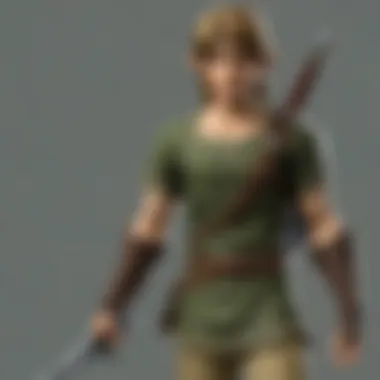
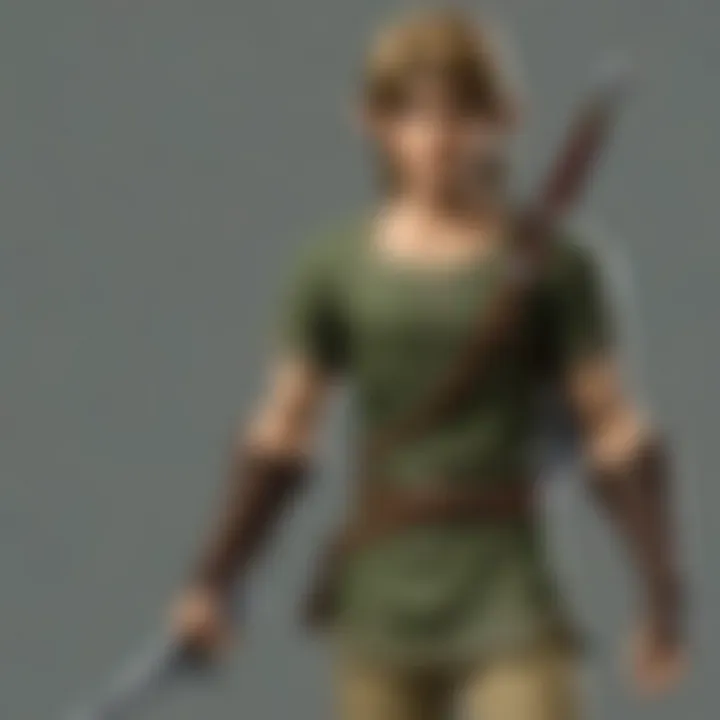
Intro
The allure of The Legend of Zelda: Twilight Princess has not dimmed since its original release on the GameCube and Wii. For many enthusiasts, it brought a darker, more mature flavor to the franchise, contrasting with other entries. Anticipation runs high as players speculate about its arrival on Nintendo Switch. This possibility opens up avenues not just for nostalgia but also for a fresh take on a beloved classic.
In this piece, we will dissect the game's legacy, analyze potential enhancements if it were to be re-released, and probe the implications for newcomers and long-time fans alike. By delving into technical aspects, gameplay features, and its captivating narrative, we aim to provide a panoramic view of what makes this title so significant. Moreover, we’ll explore community reactions, shedding light on how the gaming community feels about this beloved title possibly stepping into the limelight once more.
As we venture into this analysis, let’s unravel what makes Twilight Princess a compelling candidate for Nintendo Switch, and how it could resonate with both veteran players and those just stepping into Hyrule.
Intro to Twilight Princess
In the realm of video games, few titles hold as much weight and significance as The Legend of Zelda: Twilight Princess. Widely celebrated for its memorable storytelling and complex characters, it captures the duality of light and dark, both in gameplay and narrative. This article intends to delve into Twilight Princess, unpacking its initial release, narrative depth, and the critical response it garnered over the years. Understanding the foundations of this beloved title illuminates why it remains a focal point of conversation, especially regarding its potential arrival on the Nintendo Switch.
Overview of the Game’s Initial Release
Released in 2006 for the Nintendo GameCube and Wii, Twilight Princess was a milestone moment in gaming history. The game was launched as a response to The Legend of Zelda: The Wind Waker, which had a more whimsical aesthetic that did not sit well with all fans. The darker tone and realistic graphics of Twilight Princess catered to a broader audience, appealing to both newcomers and seasoned players alike.
From its opening sequence, players were entranced by Link's slow transformation from a humble farm boy into a hero battling against overwhelming odds. The game challenged players with creative puzzles and strategic combat, setting a high bar for future implementations in the Zelda franchise. Its sprawling world, complete with rich lore and side quests, further etched Twilight Princess into the hearts of players.
Narrative and Themes
At its core, Twilight Princess is not just a game; it's a profound exploration of light versus darkness, oftentimes reflected through the various characters that populate the land of Hyrule. The narrative weaves in themes of courage, sacrifice, and the consequence of choices. The contrasting realms of Twilight and Light serve as metaphors for deeper human experiences, tapping into the audience's sense of ethical duties and moral dilemmas. This thematic depth resonates with players, prompting them to reflect on their own emotions in relation to the world around them.
A hallmark of the game is its emphasis on character arcs, which diverge from the traditional hero’s journey. For instance, the relationship between Link and Midna adds layers of complexity to the narrative, driving home the idea that alliances can be borne out of necessity yet evolve into something profoundly meaningful. The dynamics between these characters not only elevate the plot but also allow for an engaging experience where the player's emotional investment makes every victory feel personal.
Critical Reception Over the Years
Upon its release, Twilight Princess received a tremendous amount of critical acclaim, securing perfect scores from prominent gaming outlets. Many praised it for its ambitious gameplay and rich environment, which felt both vast and detailed. The visual artistry cleverly merged realism with the fantastical, leading to a uniquely immersive adventure.
However, as time passed, critiques began to surface. Some players noted that while the game was expansive, its pacing could feel sluggish in certain sections. The reliance on backtracking for puzzles was also a point of contention, sparking debates within the community about design choices. Despite this, the overall legacy of Twilight Princess shimmered brightly. Forums and discussion boards like Reddit illustrate the game's lasting impact, as fans reminisce about their experiences and share theories surrounding the title.
In summation, The Legend of Zelda: Twilight Princess not only redefined expectations when it first graced console screens but also laid a sturdy foundation for the future of the franchise. It remains a remarkable blend of intricate storytelling, engaging gameplay, and a rich emotional landscape, warranting its ongoing discussion among enthusiasts and newcomers alike.
The Case for a Nintendo Switch Release
The notion of The Legend of Zelda: Twilight Princess making its way to the Nintendo Switch has stirred quite a bit of buzz. As we delve into this topic, it is crucial to understand why such a re-release isn't merely a nostalgic trip down memory lane but also a significant move in further enriching the gaming landscape. This part of the analysis emphasizes the technical advantages afforded by the Switch, alongside the gameplay enhancements that could rejuvenate the experience for players both old and new.
Technical Advancements in the Switch
When assessing the Nintendo Switch, it’s more than a simple matter of graphic fidelity or processing power. The Switch encapsulates a versatile gaming experience, harnessing its unique hybrid nature. Players are no longer tethered to a TV, enabling jederzeit access whether on the bus or lounging at home.
- Resolution and Performance: While Twilight Princess originally graced the GameCube and Wii in standard definition, the Switch has the capability to deliver up to 1080p resolution in docked mode. This would represent a substantial upgrade for both the visuals and the gameplay clarity.
- Control Mechanisms: The Joy-Con controllers offer a fresh perspective on gameplay mechanics. Motion controls, made popular thanks to the Wii, have more refined integrations that allow for fluid movement and engagement in combat scenarios, which could elevate the immersion level in Twilight Princess.
- Accessibility Features: Enhancements such as save state functionalities and a more intuitive interface can help cater to a broader audience, including those who may find the original's complexity a bit daunting. Gamers can jump into whatever part of the adventure appeals to them without the hassle of long-winded backtracking.
In essence, these advancements don’t just benefit the graphics; they offer a chance to present an exemplary experience that resonates with contemporary gamers while respecting the soul of the original title.

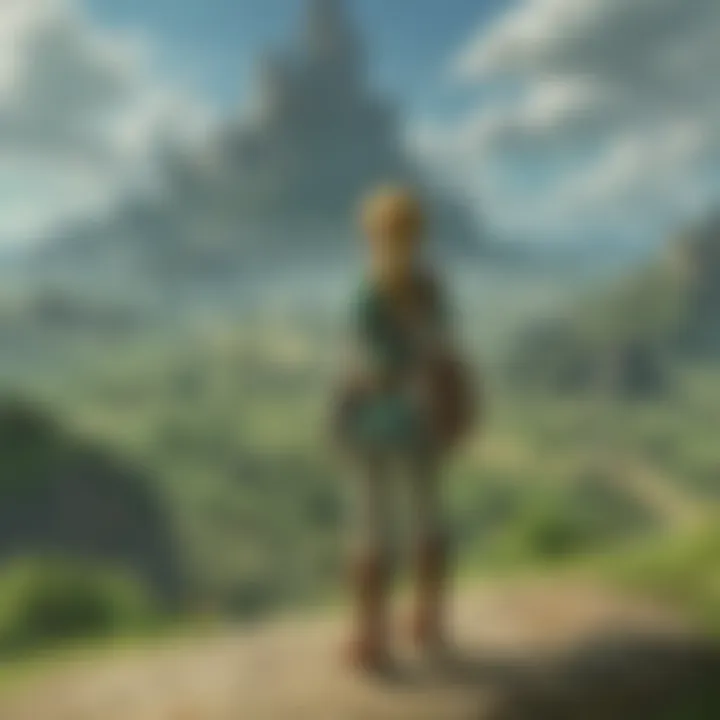
Potential Enhancements to Gameplay
Now, let’s talk about gameplay. Twilight Princess is a classic; its heart lies in a captivating narrative. But the execution of its gameplay mechanics could see significant uplift on the Switch. Here, we explore various enhancements that could make the gameplay experience smoother and more engaging:
- Fast Travel System: Introducing a more user-friendly fast travel option can reduce the time players spend navigating the vast landscapes of Hyrule, allowing for a sharper focus on story and exploration.
- Refined Puzzle Mechanics: With the capabilities of the Switch, puzzles could utilize unique control features, such as touchscreen functionality or motion sensors. Imagine solving a puzzle that requires players to physically manipulate the in-game elements using Joy-Con gestures.
- Incorporation of Online Features: Multiplayer options or an online community system could enhance engagement, allowing players to swap tips on difficult sections, fostering a community vibe that continues long after the game’s completion.
"The Switch allows for such innovation that the core experience of Twilight Princess can evolve, without losing its compelling narrative and charm."
By incorporating these elements, Twilight Princess on the Nintendo Switch wouldn’t just be a nostalgic revival; it would breathe new life into the beloved title for generations to come. The emphasis is not just on what was, but on reimagining it for today’s audience, ensuring that it remains relevant and electrifying in the fast-paced world of gaming. With every tilt of the controller and every strategic move, players could immerse themselves once again in the deep lore of Hyrule, ready to forge new legends.
Gameplay Mechanics Review
The Gameplay Mechanics Review is a crucial part of this analysis, as it deeply influences how players engage with Twilight Princess, especially on the Nintendo Switch. This section examines the core elements that define the game’s interactive experience, including combat systems, puzzles and exploration, and character progression. By closely analyzing these components, we can shed light on their significance not only for newcomers but also for series veterans. A smooth gameplay experience can make or break a title, and Twilight Princess offers a range of mechanics that elevate player immersion and enjoyment.
Combat Systems
Combat in Twilight Princess is robust and dynamic. Players control Link as he battles various foes, and the system is built around a blend of strategies and reflexes. One standout feature is the Z-targeting system — a mechanic that allows better targeting of enemies. This system helps players focus on adversaries even in chaotic situations, ensuring a smoother experience.
Moreover, players employ a variety of weapons, each with unique attributes. For example:
- Swords for slashing opponents
- Bows for ranged attacks
- Bombs for area damage
This array allows for tactical combat, where players can choose how best to confront foes based on their own preferred play style.
An important aspect of the combat system is its combo attacks. Combining attacks can inflict more damage on tougher enemies, which enhances the depth of the battle experience. The game encourages experimentation, which keeps players engaged and encourages them to hone their skills.
Puzzles and Exploration
Puzzles are an integral part of Twilight Princess, forming a bridge between combat and story. The game is filled with intricate puzzles that require players to think critically. They range from simple, such as moving blocks to access an area, to complex, like deciphering ancient symbols to unlock new paths. This variety enriches exploration by mixing game mechanics.
Locations are crafted with exploration in mind. Players often receive a new tool or ability that opens previously inaccessible areas. For instance:
- Acquiring the Clawshot expands the areas players can navigate, allowing them to reach higher elevations.
- The Ball and Chain becomes essential for smashing obstacles in their path.
These tools not only serve practical purposes but also weave seamlessly into the narrative, allowing players to feel more connected to the story and the world.
Character Progression
Character progression in Twilight Princess is more than just leveling up; it signifies personal growth and mastery within the game. As players advance, they encounter a system that evolves with them. Link's abilities are enhanced through various means:
- Heart Pieces can be collected, increasing health, which directly affects survivability in combat.
- Skill Enhancements like learning new sword techniques provide deeper layers to player controls.
There’s also the aspect of spiritual transformation. The mechanic of turning into a wolf introduces unique abilities. As a wolf, Link can sense hidden pathways or communicate with animals, adding another layer of problem-solving to the gameplay. This transformation allows for varied gameplay experiences and breaks the monotony often found in traditional role-playing mechanics.
"Great gameplay feels like a journey of mastering a dance — every step, every turn a reflection of the player’s growth."
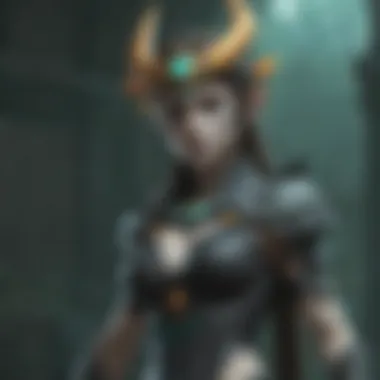
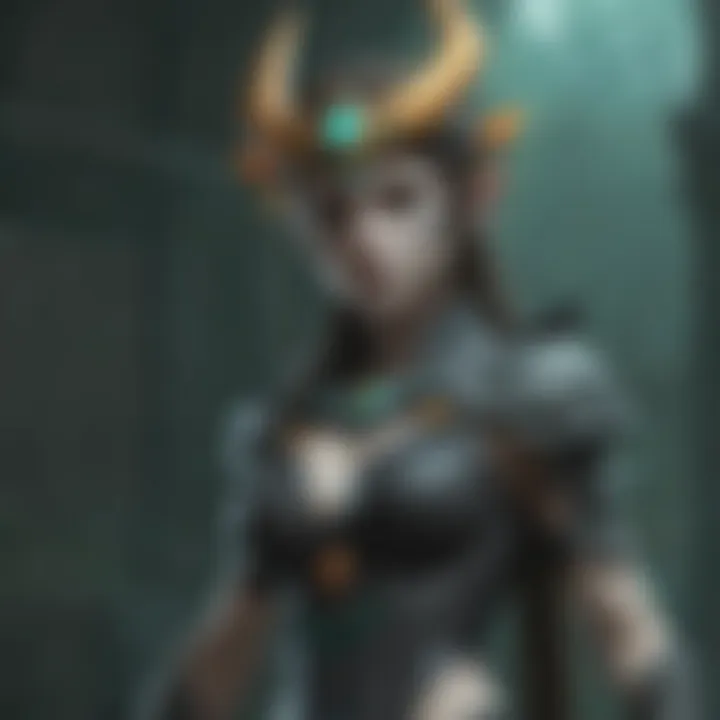
The balance between combat, puzzles, and progression creates an environment where players feel fulfilled. This multifaceted approach ensures that Twilight Princess remains engaged and provides layers of enjoyment ripe for exploration on the Nintendo Switch.
Visuals and Aesthetic Enhancements
The visual and aesthetic aspects of a game can make or break a player's experience. With 'Twilight Princess' possibly making its way on the Nintendo Switch, a fresh look at its visuals can unveil how it captures the dark and rich atmosphere of Hyrule. This section will delve into specific elements that could greatly benefit from enhancements while also considering the technical capabilities of the Switch.
Comparative Graphics Analysis
When 'Twilight Princess' first graced the scene in 2006, its graphics were impressive—pushing the limits of the GameCube and Wii hardware. Fast forward to the Switch era, and players now expect visually stunning graphics that utilize modern technology.
One of the essential elements to consider is how textures and lighting can be improved to create a more immersive experience. With the Switch’s increased power, there exists the potential for higher resolution textures, more detailed character models, and lighting effects that mimic natural light and shadow dynamics. For instance, the misty woods of the Faron region would feel more alive with enhanced atmospheric effects, creating an experience that draws players deeper into the game.
Moreover, analyzing the differences between the original version and the HD remaster available on the Wii U reveals a stark contrast. In comparison, the newer hardware can enhance color palettes, making environments pop with vibrancy. Think about Link’s iconic green tunic: in a Switch version, the hues can be richer and textures smoother, making it stand out more prominently against a lush backdrop of Hyrule.
"Visual enhancements breathe a new life into classic games, grabbing the attention of both veterans and newcomers."
Environmental Design and Immersion
The environments in 'Twilight Princess' are not just mere backdrops; they are characters in their own right, playing a pivotal role in the storytelling. From the gloomy depths of the Arbiter's Grounds to the serene beauty of Lake Hylia, the landscapes are crafted to enhance the mood and provide a sense of place.
With the Switch, the ability to detail environmental designs can be vastly improved, leading to greater immersion. The use of advanced graphical rendering could allow for richer ecosystems—where trees sway gently in a virtual breeze or ripples in water respond more realistically to Link's movements.
The unique aesthetic choice of a darker, more mature tone in 'Twilight Princess' can be enhanced with improved lighting and shadow play. Envision traversing through the Twilight Realm with dynamic shadows that shift and subtly change as players progress through the scene. It creates an enveloping atmosphere that feels as if players are stepping into a living painting.
Additionally, the attention to detail in design—like the intricate architecture of Hyrule Castle or the various villages—could use enhanced textures to reinforce the lore. It wouldn't just be about exploring; it would be about feeling the weight of Hyrule’s history as the aesthetics would visually narrate tales of old.
Community Reception and Anticipation
The community surrounding The Legend of Zelda: Twilight Princess is a vibrant tapestry woven from the threads of nostalgia, speculation, and fervent enthusiasm. The anticipation of its potential arrival on the Nintendo Switch speaks volumes about the game's lasting appeal among fans, both old and new. As we dive into this aspect, it's crucial to highlight why community reception and anticipation occupy such a significant space in the discourse surrounding videogame releases.
Understanding player reactions, hopes, and theories not only reflects a game's historical impact but also shapes its future. The dialogue within communities, be it on platforms like Reddit or enthusiast forums, serves as a barometer for the franchise's vitality. Whether through lively discussions, fan art, or online polls, the collective sentiments of Zelda aficionados can create a palpable buzz that might influence Nintendo’s decisions regarding game preservation and enhancement on modern consoles.
Fan Theories and Speculations
In the age of online connectivity, fan theories about Twilight Princess are in abundant supply. Players often extrapolate from existing lore, arguing potential connections to other installments in the Zelda series. One popular theory suggests that a remastered version could integrate elements from both Breath of the Wild and Skyward Sword, perhaps through new gameplay mechanics or modified story arcs. This interweaving could create fresh narratives while still respecting the essence of the original game.
Moreover, fans speculate about possible additional content that could be bundled with the Switch version. Ideas range from a wider exploration of Midna's origins to deeper interaction with side characters, enhancing the playtime and lore for eager fans. Some have gone as far as imagining new gameplay modes or challenges that would breathe new life into classic segments of the game. Such speculations highlight the depth of engagement the community has with this title, revealing a strong desire for transformation while upholding nostalgia.
Comparison with Other Zelda Titles
When discussing Twilight Princess, it is nearly impossible to ignore its standing among other beloved entries in the Zelda franchise. For instance, the themes of darkness and transformation in Twilight Princess starkly contrast with the lighter, more whimsical tones of The Legend of Zelda: The Wind Waker. Yet, both games explore similar heroism and the fight against evil but through different aesthetics and storylines.
Additionally, Twilight Princess often invites comparison with Ocarina of Time, a title that set the bar for 3D adventure games. Many players reminisce about the emotional resonance of Ocarina, while others argue that Twilight Princess refined the gameplay mechanics further, offering a more mature narrative and atmospheric depth.
In terms of community discussion, debating the strengths and weaknesses of these titles not only showcases a passionate fanbase but illustrates the ongoing evolution of gaming expectations. While some may favor the bright visuals and expansive world of Breath of the Wild, others hold a special place for the darker, richer environments of Twilight Princess.
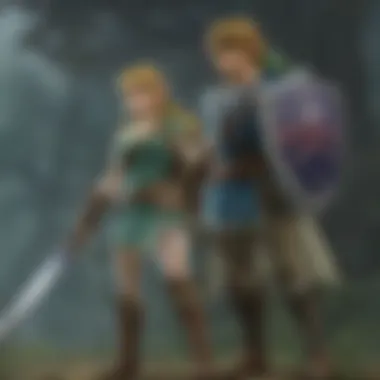
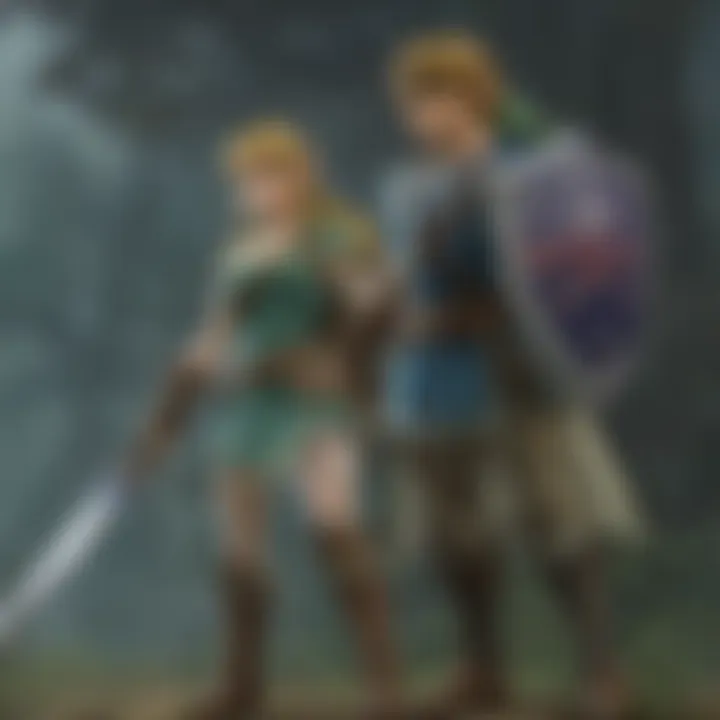
Overall, the intrigue surrounding Twilight Princess on the Switch is rooted in a community eager to explore new dimensions of a classic, driven by their love for the franchise and their imaginative theories. As anticipation builds, it echoes the heartbeat of the fans—a reminder that great games don’t just linger in memory; they evolve through the dialogue of the community.
Implications for the Zelda Franchise
The prospect of 'Twilight Princess' landing on the Nintendo Switch carries weighty implications for the Zelda franchise. It’s not just about making a beloved title accessible; it’s about the ripple effects that such a re-release can create. This section will dissect the legacy of Twilight Princess and its potential influence on future Zelda installments, alongside market dynamics that awareness it merits consideration.
Legacy and Future Installations
Twilight Princess holds a special place in the hearts of fans for its darker tone and thematic depth, a departure from its predecessors. It set a precedent in narrative complexity that has become a hallmark of the franchise. If Twilight Princess re-emerges on the Switch, it could invigorate discussions about what makes a Zelda game resonate with players.
- Embracing Core Themes: Revisiting this title allows the franchise to highlight central themes of heroism, sacrifice, and duality.
- Setting Standards for Next Titles: The game’s significant elements could serve as a benchmark for developers looking to craft the next installment.
- Expand the Narrative Universe: There’s opportunity for new storylines to branch out from the lore established in Twilight Princess, weaving a richer tapestry for future games.
The potential enhancements could align the game’s legacy with future innovations that keep the Zelda series fresh yet firmly rooted in its past. This could crucially shape player expectations, nudging them towards a deeper appreciation of narrative innovation in gaming.
Market Trends and Consumer Behavior
Releasing Twilight Princess on the Switch could be a strategic move influenced by current market trends. Gaming consumers today are accustomed to both nostalgia and novelty, pushing boundaries beyond typical parameters.
- Nostalgic Value: As generations of fans pining for their childhood favorites gain purchasing power, remastered versions of classic titles stand to capitalize on this longing.
- Demand for Accessibility: With gaming habits shifting, providing access to historic titles on modern platforms reflects responsiveness to consumer behavior. This trend highlights the importance of maintaining a portfolio that appeals to both new and existing audiences.
- Community Engagement: The community has a vested interest in the direction of the franchise, as evidenced by feedback and discussions on platforms like Reddit. Their opinions can heavily influence the success of such releases, shaping future content strategies based on nuanced consumer desires.
In summary, the implications of Twilight Princess being available again cannot be understated. It does not just represent an additional title on the Switch; it embodies a bridge between rich past elements and contemporary gaming experiences. This strategy could possibly steer the franchise's trajectory for years to come.
“Retro gaming is not just a fad; it’s a lifelong relationship with cherished memories that current games can rekindle.”
The interplay between legacy, consumer behavior, and market trends indeed positions Twilight Princess as more than just a nostalgic trip—it is a pivotal piece in the ongoing evolution of the Zelda franchise.
Concluding Thoughts
As we delve into the realm of Twilight Princess, it becomes clear that this game remains a poignant bookmark in the Zelda universe. The significance of revisiting this title for the Nintendo Switch goes beyond mere nostalgia; it reflects the continuous evolution of gaming experiences. This concluding section aims to summarize key points discussed, while also presenting some final perspectives that could serve as food for thought for both long-time fans and newcomers alike.
Summary of Key Points
To recap, the journey through the comprehensive analysis has covered various facets of Twilight Princess. The game’s unique narrative and robust themes demonstrate how it captured the hearts of players when it was first released, blending light and darkness in a way that resonates profoundly. In addition, the technical advancements within the Nintendo Switch platform set the stage for enhanced gameplay, which could potentially elevate the player experience significantly.
Some central takeaways include:
- Narrative Depth: The rich story intertwines with complex characters, offering an engaging experience.
- Gameplay Innovation: Updated mechanics and improved graphics could offer both new and veteran players a fresh take without losing the essence of what made the original beloved.
- Community Engagement: The anticipation and excitement within gaming communities highlight the demand and enthusiasm for this re-release, indicating that Twilight Princess still holds a special place in the hearts of many.
This summary not only encapsulates the core elements explored but also underscores the ongoing impact of this classic title on the gaming landscape.
Final Perspectives on Twilight Princess
Reflecting on Twilight Princess and its possible arrival on the Nintendo Switch prompts a broader discourse around legacy and innovation in gaming. This potential re-release signifies more than just an adaptation; it emphasizes a commitment to preserving and enhancing the player's journey.
As technology continues to advance, it is crucial for gaming companies to recognize and embrace these shifts. The delicate balance between honoring the original's spirit and integrating modern mechanics will be key to successfully bringing this title to a new audience. Fans can only hope that the reimagined experience captures the essence of a time when gaming was seen as an escape into vast, imaginative worlds.
In summary, the hope rests not only on what Twilight Princess has to offer in a new format but also on what the Zelda franchise represents: a bridge connecting generations of gamers. Whether you’ve traversed the land of Hyrule before or are stepping into it for the first time, the potential revival of Twilight Princess on the Nintendo Switch could reignite our love for exploration in breathtaking lands, giving players a chance to rediscover what adventure truly means.
"In gaming, like life, sometimes you need to revisit the old roads to discover what new paths lie ahead."
It’s a sentiment that echoes the feelings towards Twilight Princess, inviting us to keep our hearts open to the unfolding possibilities.







